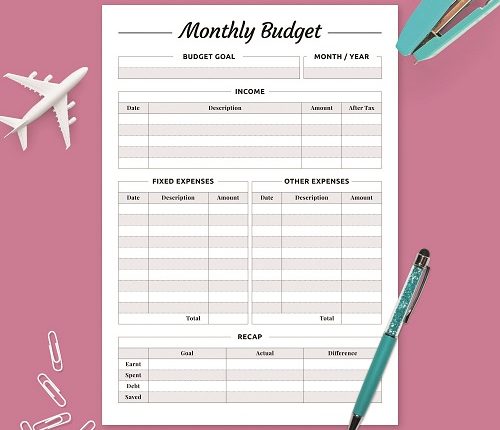Kakeibo a simple and effective Japanese budgeting
Saving money is hard. Really, really hard. However much you feel you’re scrimping, you’re always left with nothing more than a few pitiful dollars rattling around your account at the end of the month, right? The only solution to this is budgeting, but there are many budgeting styles out there. Today let’s lean about the Japanese budgeting technique
What is Kakeibo?
The simple mindful practice of Kakeibo, an old Japanese Method for managing money, is to create an accountability ledger of your money being spent and saved every week.
We have to know where we are so we can know how to get where we want to be i.e. in control of our finances and with a plan for how to spend and save, and that is the purpose for this method that requires manually recording and considering our finances.
It was created back in 1904 by Japanese journalist Hani Motoko to break down our money habits in a few simple areas.
It looks at essentially how much money we bring home every week or month; how much money we would like to save towards our financial goals; how much money we spend every week or month; and then the breakdown of this allows us to analyse further how we would like to be spending and saving and make changes.
How does Kakeibo work?
The method is based on the commitment to log and record by hand every money transaction that we make, and then to categories our spending into four separate sections.
These are:
1. Needs – the essentials such as your mortgage or rent, food, transportation and ensuring you are safe and secure every day.
2. Wants – Items you enjoy and bring happiness but not essential to living. This can be takeaway lunches at work, the latest gadgets etc.
3. Culture – developing your character with visits to art galleries, theatre, traveling etc
4. Unexpected – medical emergencies, transportation fixes etc where the cost has been not planned for but needed to be made.
The purpose of the categories is to be more considered with your purchases and spending habits and drive choices with our money that are in line with our goals, rather than impulse.
As you can see very clearly, the focus is on money mindfulness and ensuring the items bring us as much joy and purpose as possible, whilst also allowing for life to be filled with experiences.
They say power comes from simplicity as you can clearly see with this method and the limited categories for how we are spending our money, it strips back our budget into the main key areas that allow us to take a step back from our natural spending everyday habits.
How to start your first Kakeibo budget today?
At the start of the month, create your initial budget by calculating your total household income and then deducting your expenses. From that amount you create a Spending and a Savings goal.
If you were to add up all four of those money amounts (Income, Outgoing, Save and Spend) you will arrive at your household income once again.
With the monthly spending goal section, now use this to create a WEEKLY spending amount (simply divide by 4 or 5 depending on the number of full weeks in the month).
Next step is then to begin your week ahead tracking every purchase and noting the category it falls under as we mentioned above.
Ideally track this in real time, I use a small notebook that fits in my purse, and take it out with your pen and record as soon as you have made the purchase.
This extra step when making a purchase adds in a very important element of checking to make sure we are happy with spending the money, and also adding a level of responsibility for every money spend we make each week.
Monthly Calculations to complete with Kakeibo
At the end of the month, you will then using the information about how much money you have spent in the four spending categories, calculate the total spend on the individual areas.
Also you work out your total spend in the month and compare it to your savings goal. If you managed to achieve or spend less than you predicted Weekly Spend budget, then you will have easily met your monthly saving target.
If you overspent, then it is time to look at the different categories that had money spent on them and look for areas that might have been improved. There is no right or wrong way to do this, however the main step is not feeling guilty about past money spends but rather use the information to create either a achievable spending and saving budget for the next month, or put new habits into place to try again.






